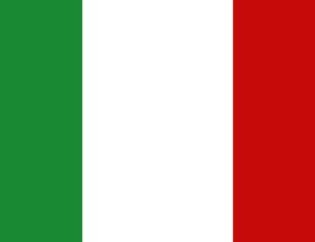
Spain - Overview
Spain, officially the Kingdom of Spain, is a prominent country in southwestern Europe. It stands as the largest nation in Southern Europe and is the fourth-most populous member of the European Union. Spain spans an extensive area of 505,370 square kilometers, encompassing the Canary Islands in the Atlantic Ocean, the Balearic Islands in the Mediterranean Sea, and the autonomous cities of Ceuta and Melilla in North Africa. On the mainland, it is bordered by France and Andorra to the north, the Mediterranean Sea and Gibraltar to the east and south, and Portugal and the Atlantic Ocean to the west. The capital and largest city is Madrid, which is known for its vibrant culture and historical significance, while other major urban centers include Barcelona, Valencia, and Zaragoza. Historically, Spain has been influenced by various civilizations, including the Celts, Iberians, Romans, and Moors, which have all contributed to its rich cultural and architectural heritage. Spain's unification in the late 15th century marked the beginning of its prominence as a global power, especially during the Age of Discovery.
Spanish Cuisine
Spanish cuisine is a rich and diverse amalgamation of regional flavors and historical influences, renowned for its use of fresh, high-quality ingredients. The foundation of Spanish cooking lies in its Mediterranean roots, with olive oil being a key element. Spain is the world's largest producer of olive oil, which is used extensively in cooking, particularly in vegetable-based sauces known as sofritos. Traditional dishes often feature meats such as chicken, pork, lamb, and veal, alongside a variety of seafood, reflecting the country's extensive coastline. Herbs like parsley, oregano, rosemary, and thyme, along with generous use of garlic, are integral to enhancing the flavors of Spanish dishes. The culinary tradition also includes an array of tapas, which are small appetizer-sized portions served in bars and cafes, offering a wide range of flavors and textures. Regional variations are significant, with each area adding its unique touch to the national cuisine, making Spanish food both diverse and flavorful.
Mushrooms in Spanish Kitchen
Mushrooms in Spanish cuisine play a crucial role in adding depth and complexity to a variety of dishes. In Spanish cuisine, mushrooms are not just an ingredient but a highlight of many traditional recipes. The most commonly used mushrooms include:
- Chanterelles - these mushrooms are highly valued for their delicate fruity aroma and peppery taste, often used in sauces and sautés to add a gourmet touch.
- Boletes - known for their firm texture and earthy flavor, they are a staple in many Spanish stews and rice dishes.
- Champignons - these versatile mushrooms are widely used across many dishes, from soups and stews to tapas and salads.
- Puffballs - appreciated for their mild flavor and spongy texture, they are often incorporated into various dishes to add a unique texture.
These mushrooms enhance the richness of Spanish dishes, contributing to the overall gastronomic experience in Spanish restaurants.
Spanish Dishes with Mushrooms
Spanish cuisine showcases the versatility of mushrooms through a variety of delectable dishes. Some notable Spanish dishes with mushrooms include:
- Setas al ajillo - this dish features mushrooms marinated in garlic and sautéed in olive oil. The garlic-infused oil complements the mushrooms' earthy flavor, making it a popular tapas choice.
- Revuelto de setas - a flavorful scramble made with a mix of mushrooms and eggs. This dish highlights the rich, umami taste of mushrooms, making it a hearty and satisfying meal.
- Mushroom paella - a vegetarian variation of the classic Spanish rice dish. The mushrooms add a robust flavor and meaty texture, making this paella a favorite among mushroom lovers.
These dishes exemplify the integral role mushrooms play in Spanish cuisine, offering rich flavors and diverse textures that enhance the dining experience in Spanish restaurants.











